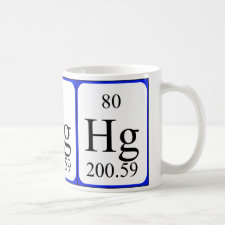
Authors: Tang XJ, Niu D, Bi CL, Shen BX
Article Title: Hg2+ Adsorption from a Low-Concentration Aqueous Solution on Chitosan Beads Modified by Combining Polyamination with Hg2+-Imprinted Technologies.
Publication date: 2013
Journal: Industrial & Engineering Chemistry Research
Volume: 52
Issue: (36)
Page numbers: 13120-13127.
DOI: 10.1021/ie401359d
Abstract: Chitosan (CTS) derivative adsorbent [P-C-CTS-(Hg)] was prepared by employing the polyamination and Hg2+-imprinted technologies for Hg2+ removal from a low-concentration aqueous solution (CHg2+ £ 40 mg L-1). The prepared adsorbents were characterized by Fourier transform infrared spectroscopy, and their physical and chemical properties were compared. The adsorption capacity of P-C-CTS-(Hg) beads to Hg2+ was 2.2 times higher than that of CTS beads because of the increased number of amide groups as adsorption sites. The adsorption processes and mechanisms at pH from 1.5 to 5.5 were proposed according to the aqueous mercury species distributions. Langmuir and Freundlich isotherm models were applied to analyze the experimental data of Hg2+ adsorption by P-C-CTS-(Hg) and predict the relevant isotherm parameters. The best interpretation was given by the Freundlich isotherm equation. The kinetic adsorptions were well described by a pseudo-second-order reaction model. Furthermore, the results of selectivity adsorption suggested that P-C-CTS-(Hg) possessed good adsorption selectivity for Hg2+ in the presence of Pb2+ because of the employment of Hg2+-imprinted technology. The regeneration and reutilization of P-C-CTS-(Hg) were investigated. The results showed that the adsorption capacity and adsorption property remained stable after eight reuse cycles
Template and target information: mercury ion, Hg(II)



Join the Society for Molecular Imprinting

New items RSS feed
Sign-up for e-mail updates:
Choose between receiving an occasional newsletter or more frequent e-mail alerts.
Click here to go to the sign-up page.
Is your name elemental or peptidic? Enter your name and find out by clicking either of the buttons below!
Other products you may like:
 MIPdatabase
MIPdatabase









